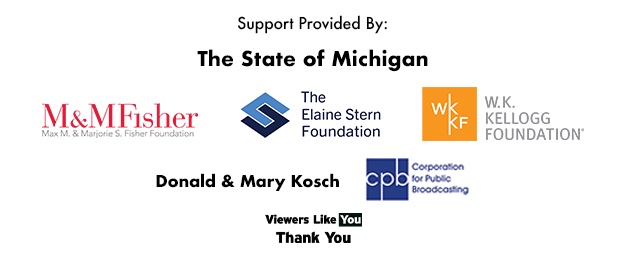Subjects
Shows
Describe the music performed and presented in 2nd grade by moving, drawing, or through other appropriate responses.
Introduce music vocabulary to describe the qualities of music of various styles.
Working in pairs, follow a leader. Change so that the leader becomes the follower.
Use locomotor movements and pathways to create a sequence with a beginning, middle, and an end.
Explore movement by responding to occurrences in nature, such as a storm or a flower blooming.
Explore timing, such as fast/slow, strong/light within personal and general space to discover and invent movement.
Demonstrate the ability to make a simple movement sequence using the elements, force, and level.
Demonstrate the ability to perform basic locomotor movements and locomotor combinations, and to vary locomotor movements by changing space, and [...]
Students experience a dance or dance concert appropriate for children and discuss the experience.
Teacher assists students in discovering several solutions to a problem using elements of dance.
Students learn two singing dances and discuss the similarities and differences in terms of the elements of dance.
Use developmentally appropriate singing voice and physically show melodic contour.
Demonstrate the following skills: run, hop (one foot to the same foot), skip, leap (one foot to the other), jump [...]
Demonstrate accurately non-locomotor movement within personal space using large muscle groups of the torso and legs.
Explore shapes at low, middle, and high levels using non-locomotor/axial movements.
Demonstrate the ability to execute movement at a moderate tempo and a fast tempo in general space.
Demonstrate the ability to use locomotor movements with a partner while holding one hand.
Use adjectives and adverbs, and choose between them depending on what is to be modified.
Produce, expand, and rearrange complete simple and compound sentences (e.g., The boy watched the movie; The little boy watched the [...]
I can use capital letters correctly. I can use punctuation correctly. I can use common spelling pattern when writing words.
Use an apostrophe to form contractions and frequently occurring possessives.
Generalize learned spelling patterns when writing words (e.g., cage → badge; boy → boil).
Consult reference materials, including beginning dictionaries, as needed to check and correct spellings
I can recognize and explain how formal English differs from informal English. I can use formal and informal English when [...]
I can determine the meaning of an unknown word using context clues. I can determine the meaning of an unknown [...]
Use sentence-level context as a clue to the meaning of a word or phrase.
Determine the meaning of the new word formed when a known prefix is added to a known word (e.g., happy/unhappy, [...]
Use a known root word as a clue to the meaning of an unknown word with the same root (e.g., [...]
Use knowledge of the meaning of individual words to predict the meaning of compound words (e.g., birdhouse, lighthouse, housefly; bookshelf, [...]
Use glossaries and beginning dictionaries, both print and digital, to determine or clarify the meaning of words and phrases.
I can make real-life connections to words I hear and read. I can recognize verbs and adjectives that have similar [...]
Identify real-life connections between words and their use (e.g., describe foods that are spicy or juicy).
Distinguish shades of meaning among closely related verbs (e.g., toss, throw, hurl) and closely related adjectives (e.g., thin, slender, skinny, [...]
I can discover new words and phrases through reading, listening, and conversation. I can use my new words and phrases [...]
Subjects
Shows
Describe the music performed and presented in 2nd grade by moving, drawing, or through other appropriate responses.
Introduce music vocabulary to describe the qualities of music of various styles.
Working in pairs, follow a leader. Change so that the leader becomes the follower.
Use locomotor movements and pathways to create a sequence with a beginning, middle, and an end.
Explore movement by responding to occurrences in nature, such as a storm or a flower blooming.
Explore timing, such as fast/slow, strong/light within personal and general space to discover and invent movement.
Demonstrate the ability to make a simple movement sequence using the elements, force, and level.
Demonstrate the ability to perform basic locomotor movements and locomotor combinations, and to vary locomotor movements by changing space, and [...]
Students experience a dance or dance concert appropriate for children and discuss the experience.
Teacher assists students in discovering several solutions to a problem using elements of dance.
Students learn two singing dances and discuss the similarities and differences in terms of the elements of dance.
Use developmentally appropriate singing voice and physically show melodic contour.
Demonstrate the following skills: run, hop (one foot to the same foot), skip, leap (one foot to the other), jump [...]
Demonstrate accurately non-locomotor movement within personal space using large muscle groups of the torso and legs.
Explore shapes at low, middle, and high levels using non-locomotor/axial movements.
Demonstrate the ability to execute movement at a moderate tempo and a fast tempo in general space.
Demonstrate the ability to use locomotor movements with a partner while holding one hand.
Use adjectives and adverbs, and choose between them depending on what is to be modified.
Produce, expand, and rearrange complete simple and compound sentences (e.g., The boy watched the movie; The little boy watched the [...]
I can use capital letters correctly. I can use punctuation correctly. I can use common spelling pattern when writing words.
Use an apostrophe to form contractions and frequently occurring possessives.
Generalize learned spelling patterns when writing words (e.g., cage → badge; boy → boil).
Consult reference materials, including beginning dictionaries, as needed to check and correct spellings
I can recognize and explain how formal English differs from informal English. I can use formal and informal English when [...]
I can determine the meaning of an unknown word using context clues. I can determine the meaning of an unknown [...]
Use sentence-level context as a clue to the meaning of a word or phrase.
Determine the meaning of the new word formed when a known prefix is added to a known word (e.g., happy/unhappy, [...]
Use a known root word as a clue to the meaning of an unknown word with the same root (e.g., [...]
Use knowledge of the meaning of individual words to predict the meaning of compound words (e.g., birdhouse, lighthouse, housefly; bookshelf, [...]
Use glossaries and beginning dictionaries, both print and digital, to determine or clarify the meaning of words and phrases.
I can make real-life connections to words I hear and read. I can recognize verbs and adjectives that have similar [...]
Identify real-life connections between words and their use (e.g., describe foods that are spicy or juicy).
Distinguish shades of meaning among closely related verbs (e.g., toss, throw, hurl) and closely related adjectives (e.g., thin, slender, skinny, [...]
I can discover new words and phrases through reading, listening, and conversation. I can use my new words and phrases [...]


